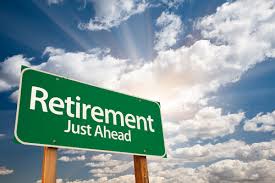…read a recent headline in the Guardian which was followed by an article in this week’s Saturday Telegraph (“Can I really retire early (without living like a monk)”). Over the last few weeks, the UK press has become, at least superficially, interested in the FIRE (Financially Independent Retire Early) community. But their approach is to throw around seemingly random figures (the number that has caught the eye is a headline-grabbing figure of ‘only’ £600,000 needed to fund an early retirement), before launching into a few anecdotal examples of those who’ve achieved FIRE or, in the case of the telegraph starting the article with “I must save at least 50% of my income”. Why?
Perhaps unsurprisingly the public comments on the articles have seen a fair amount of vitriol and, with average net household disposable earnings at around £28,000 per year, it’s not difficult to understand why as, on first sight, it’s hard to see how the average household could accumulate that amount. Or maybe the point of the press is to generate a bit of outrage? The Daily Mail seems to thrive on that, but let’s not go there.
I started this article thinking I was going to write about spending but then realised it was impossible to not touch on the maths involved around the £600,000, so I’ve now split the post into two. The first part (this one) talks about the investment maths. The second part which hopefully follows in a few days (although my blogging track record does not guarantee that!) talks about how to stop wasting money to release cash that can be used to fund the plan.

Let’s start with the £600,000 which comes from the much discussed (including on this blog) 4% withdrawal rule which broadly says that to retire we need 25 x annual spend (assumed to be £24,000 in this example) after which we can safely withdraw 4% per annum without ever running out of money. Sound simple? Well, of course, it is, in fact, a gross oversimplification so let’s delve in a little.
Firstly, the bad news, it ignores inflation. Why is that important? Well, it means that over a 25-year planning horizon assuming average inflation at 2% the £24,000 spending target turns into around £38,500 which, after applying the same maths (25 x annual spending) increases the pot required to around £965,000 (keeping the figures round).
 Secondly, the good news. Assuming someone who worked throughout those 25 years (in fact a bit longer) and contributed national insurance they would receive the state pension (assuming the goal posts don’t continue to move) and with the current triple lock we should assume that the current £164.35 per week (£8,500 annually) maximum will inflate by a minimum of 2.5% per annum (using the – increasingly unlikely – assumption that the triple lock remains unmolested). That means over the 25 years the annual state pension becomes £15,500 (however unlikely that might seem today). Deducting that from our expenditure means we’re actually back to needing ‘only’ £23,000 from our own pension pot (i.e. £38,500 minus £15,500 = £23,000). Therefore our pot requirement is now £580,000 (25 x £23,000).
Secondly, the good news. Assuming someone who worked throughout those 25 years (in fact a bit longer) and contributed national insurance they would receive the state pension (assuming the goal posts don’t continue to move) and with the current triple lock we should assume that the current £164.35 per week (£8,500 annually) maximum will inflate by a minimum of 2.5% per annum (using the – increasingly unlikely – assumption that the triple lock remains unmolested). That means over the 25 years the annual state pension becomes £15,500 (however unlikely that might seem today). Deducting that from our expenditure means we’re actually back to needing ‘only’ £23,000 from our own pension pot (i.e. £38,500 minus £15,500 = £23,000). Therefore our pot requirement is now £580,000 (25 x £23,000).
Still with me?
£580,000 is still an enormous amount of money but of course, most of the complainers are not factoring in the joys of compounding and the simplicity of early retirement maths.
What everyone actually wants to know is “how much do I need to invest per annum to get to that figure (the £580,000)?” and therein lies the problem of pensions today, nobody can tell you that. Unlike direct benefit pensions from yesteryear where you knew what you were going to get out, today there are multiple factors that the average person needs to think about. So let’s try and boil them down to as few as possible and then we’ll run through a worked example.
Simple speaking our variables are:
- Inflation
- Investment return
- The annual amount invested, and whether we’re able to increase that each year by more than inflation.
We’ve talked about the impact of inflation on our spending target and required pot size) above.

Investment returns are both difficult to estimate and, from a macro perspective, impossible to influence (we can influence our own investment returns by looking at our investment mix). However, the impact of wrongly estimating investment returns could materially impact whether our target is hit, exceeded or spectacularly missed. Add in the fact that mistakes made early in the plan will have the biggest impact and we have a recipe for uncertainty.
We can offset that risk by making cautious investment return assumptions (which would need to be offset by a higher contribution rate) or taking greater risks (to generate above target returns) early on or probably a combination of both. Remember that a lot of the FIRE bloggers out there today (and especially those in the US) have benefitted from stock market returns which, over the last 20-30 years were much better than they are today but perhaps more pertinently, those returns were easier to achieve at lower risk than has been the case in the last 10 years or indeed might be expected for the next 10 years.
The other consideration that retirement planners don’t talk about enough is that we shouldn’t assume a flat rate of contribution i.e. the initial amount invested should increase at least in line with pay increases (which is hopefully equal to or greater than inflation). But those wanting to get to retirement more quickly should think about putting more in (i.e. promotion increase and/or bonuses).
Thinking about the variables we’ve discussed above, let’s look at some numbers which drop out (by the way, if you want a copy of the spreadsheet, send me a mail and I’ll happily share it with you).
Here are the assumptions that will get you to a £580,000 pot over 25 years.
- Inflation assumed to be 2% on average
- Investment return 7% (which equates to a net inflation-adjusted return of 5% – a reasonably aggressive return even with dividends reinvested)
- Starting investment £7,600 per annum (which we assume increases by inflation i.e. year 2 is £7,750 and so on) which is assumed to increase with inflation.

That initial £7,600 is scary, isn’t it? Especially on an average household disposable income of £28,000 per year i.e., it equates to over one-quarter. What can we do about it?
Well, firstly, remember that the £7,600 is the total amount gross going into your pot so hopefully, there is an employer pension match for some of that money (if you aren’t in your employer’s pension scheme, why the hell not?). In addition, contributions are made from net earnings and the government will (happily) add 20% to that (for basic rate taxpayers). So we need to work out how much is actually going into the pot in terms of cash contributed (as opposed to what is coming out of own net funds).
Let assume an individual paying in 5% of the UK’s average gross full time salary (currently around £25,000) then that’s £1,250, which would be grossed up to £1,562 by the government and if the employer matches the 5% then we end up with a pension contribution of £2,812 (compared to the £1,250 paid in by the individual). Clearly therefore if we have the option to elect for a higher employer match we should take it!

Secondly, given that our projected 25 years of contributions start early in a career hopefully, there are some promotions along the way which we might assume can be used to increase the amount paid in by more than inflation. Not an unreasonable assumption if we look at the data on how the average salary increases with the number of years’ experience. If we were to assume that the initial amount contributed can be increased by (at least) 6% per annum (i.e. 4% above inflation – which broadly corresponds to the experience related increases evidenced by Monster) then the year 1 contribution can be reduced to £5,000 (which in year 2 needs to be £5,300, year 3 £5,600 etc.). Remembering that part of that is coming from the employer and part from the government.
Thirdly, consider the likely investment returns. Over a 25 year horizon it’s likely that investment returns will gyrate but in general, a strategy that aims to achieve higher investment returns (i.e. higher than our 7% assumed) that therefore leans more towards growth equities in the early years with dividends reinvested will have a much better chance of achieving the end result. But you will need to understand and read about invest basics, be occasionally brave, hold your nerve and take some professional advice.
 Most of what we’ve talked about in this first installment will get us to a comfortable retirement but maybe not so much an early retirement. Going back to where we started this post, many within the FIRE community talk not only about the contributing and compounding we’ve discussed here but also about the lifestyle changes and particularly frugality needed to genuinely retire early. The maths are the same but the additional focus is on reducing the retirement spending requirement i.e. whether the £24,000 is really the right figure. There are few who will be genuinely happy to become a baked bean eating hermit to achieve their early retirement goals and in part two of this article, we will explore whether it’s possible to reach our retirement goals by simply cutting out waste and without unduly impacting our lifestyle. I don’t know about you but I can hardly wait!
Most of what we’ve talked about in this first installment will get us to a comfortable retirement but maybe not so much an early retirement. Going back to where we started this post, many within the FIRE community talk not only about the contributing and compounding we’ve discussed here but also about the lifestyle changes and particularly frugality needed to genuinely retire early. The maths are the same but the additional focus is on reducing the retirement spending requirement i.e. whether the £24,000 is really the right figure. There are few who will be genuinely happy to become a baked bean eating hermit to achieve their early retirement goals and in part two of this article, we will explore whether it’s possible to reach our retirement goals by simply cutting out waste and without unduly impacting our lifestyle. I don’t know about you but I can hardly wait!

2 thoughts on “Could you retire early…? (Part 1 of 2)”
This is the first time I’ve come across myself and I really like your honesty around FIRE finances!
Hi, I think the 4% rule harks back to William Bengen’s work and I’m pretty sure that it does take inflation into account. He suggested withdrawing 4% on year 0 then increasing that by inflation for each subsequent year. His success rates were based on that premise. Might be worth checking out and seeing if your OP needs a tweak accordingly